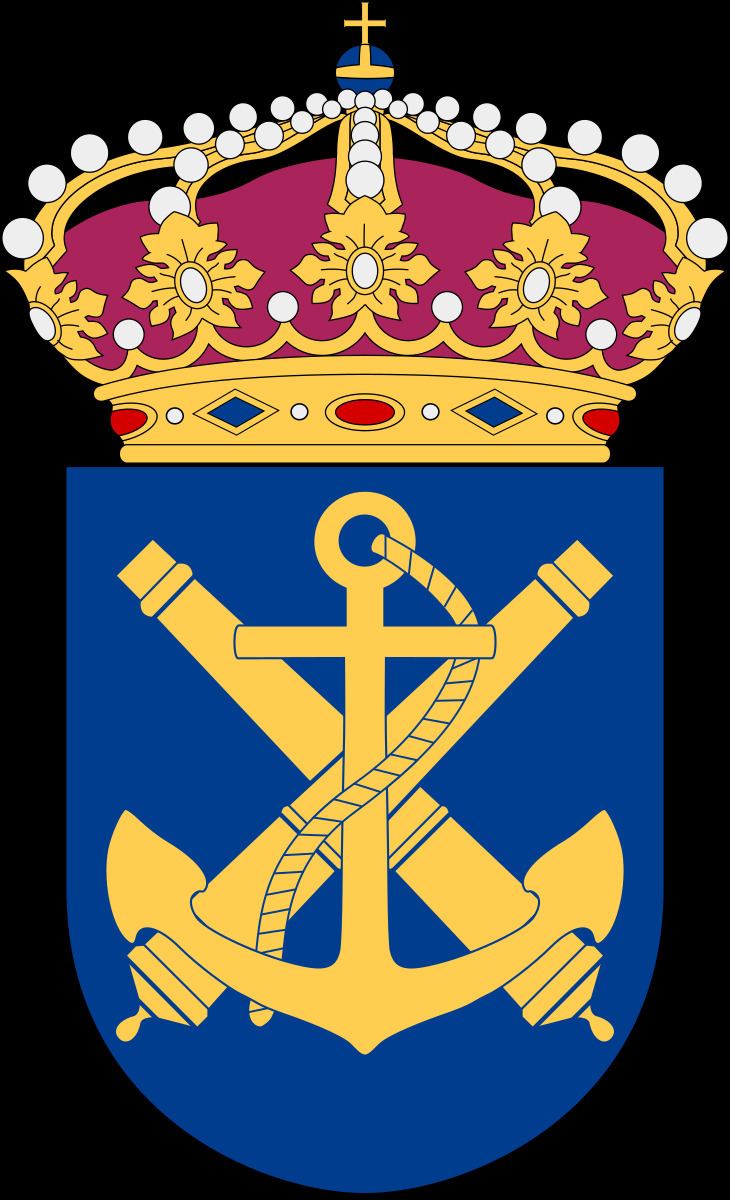Active 1907–1994 | Country Sweden | |
 | ||
Allegiance Krigsmakten/Swedish Armed Forces | ||
Naval Staff (Swedish: Marinstaben, abbreviated MS) was the staff of the Chief of the Swedish Navy. Established in 1907, it originated from the Fleet Staff (Flottans stab) which was established in 1896. The Naval Staff's duties included, among other things to assist the Chief of the Navy with leadership of the Navy's mobilization, training, tactics, organization, equipment and personnel to the extent that such activity was not directly related to operational activities, which was handled by the Defence Staff. In 1994 the Swedish Armed Forces Headquarters took over the Naval Staff's duties.
Contents
1884–1935
The Naval Staff originated from 1884 when it was decided in renewed regulations for the Swedish Navy that the head of the Ministry for Naval Affairs in purely military matters would be assisted by the Chief of the Fleet Staff. The Fleet Staff (Flottans stab) was organized by a royal proclamation on 29 May 1896. The staff consisted of a Chief and the officers commanded to serve in the staff. Since the Coastal Artillery was established in 1902 and incorporated into the Swedish Fleet (Svenska flottan) and both some time later received collectively the name Swedish Navy (Svenska marinen), its name was changed by a royal proclamation on 31 December 1907 to the Naval Staff (Marinstaben).
Initially the Naval Staff's main task was to draw up plans for the Navy's mobilization and its use during war and proposals for improvements with regard to its staff, its training and exercises. The operations of the staff was initially divided into three departments, Mobilization and Statistics Department, the Communications Department and the Organization Department. The Chief was to the King in Council a responsible flag officer or captain, and had as its main obligation to, after consultation with the Inspector of Naval Exercises at Sea, to draw up proposals for instructions for naval commanders at sea; to examine incoming and annual general reports; to give suggestions for code of statutes, regulations and instructions for the fleet, which were not of an economic nature, proposals for duty time for the navy conscripts and fleet exercises and more.
A few years later, the work of the Naval Staff were divided into four department, each with a regimental officer of the fleet as a head: the Mobilization Department, which drew up a large part of the plans for naval mobilization, dealing with matters relating to coastal artillery and conscription and more; Communications Department, which handle matters relating to the use of naval forces in wartime, the signal system, tactics and monitoring service, the Maritime Pilots Administration, military trails, waterways, canals and more; Organization Department, which prepared proposals for the improvement of the naval organization, plans for the annual fleet exercises, proposed code of statues and regulations and more; and the Foreign Department, which collected intelligence on naval warfare in foreign countries, conducted historical research on naval warfare and cared for the staff's library. In addition to the Chief and department heads, there were about 20 officers from the Navy and the Coastal Artillery commanded to serve in the Naval Staff at some time or until further notice.
1936–1994
When the Chief of the Navy post was established in 1936 the Naval Staff was transformed into the Chief of the Navy Staff. Until 1961 an Operations Department was part of the Naval Staff. From June 1964 the Naval Staff consisted of a Planning Department, four sections, a Finance Department and a Head’s Office. In the Planning Department there was a provisionally established Budget Unit. In March 1976, the Naval Staff had about 320 employees. The Naval Staff was in connection with the Swedish Armed Forces restructuring on 1 July 1994 merged with the Swedish Armed Forces Headquarters as the Naval Command (Marinledningen).
Location
The Naval Staff was until 1942 located at Birger Jarlsgatan 7 in Stockholm. The main part of the Naval Staff was from 1943 to 1981 located in the building Tre Vapen at Banérgatan 62-64 and at seven other places in the Stockholm area. In 1981 it moved to the building Bastionen at Lidingövägen 24 in Stockholm.
